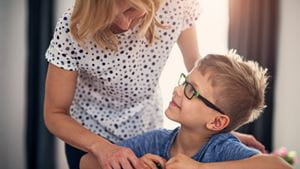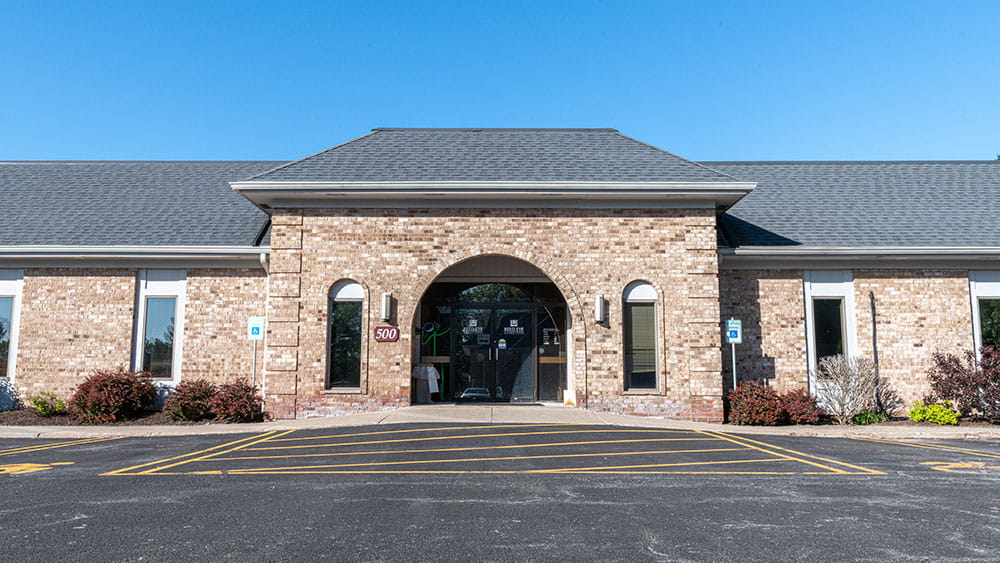
Being able to see well affects nearly every aspect of a child’s life, especially when they enter school. Playing during recess and sports, seeing their teachers, learning to drive, interacting with friends, and many other behaviors rely on good vision.
One in four children enters school needing or wearing corrective lenses, according to the American Optometric Association. Addressing this need is very important – which makes a comprehensive eye exam a necessity for children beginning or returning to school each year.
Stephanie Su, OD, is an optometrist with Rochester Regional Health at Reed Eye Associates and describes a typical exam, along with some of the vision-related issues that can be diagnosed during an exam.
A comprehensive (or full) eye exam is different than a vision screening.
Vision screenings are often conducted by pediatricians, family medicine providers, or school nurses to determine if a child has a problem with their vision. Typically, a provider will have a child read off of an eye chart while standing a certain distance away. They will also use an automated vision screener to look at the reflection of a child’s pupils and estimate what their prescription might be. This is used to determine if the child needs a referral to a specialist.
These screenings are helpful in recognizing that a child may have trouble with their eyes and referring them to a specialist. However, they are not the same as a full eye exam in terms of diagnosing any conditions or issues related to eye health. In addition, lighting is more specialized in an optometry office – meaning that a child could have trouble seeing an eye chart if their pediatric or family medicine office is lit differently in different areas.
A comprehensive eye exam will start with a conversation with the child’s parent or caregiver about their medical history and family history. This includes medications, health conditions, surgeries, and other health-related issues that can be related to the eyes.
“A patient’s medical history and overall health – including high blood pressure and diabetes – can impact not only their vision but the health of the eyes, as well,” Dr. Su said.
An optometrist will then assess a child’s eyesight, prescriptions and eye pressure. They will also dilate the eyes to look at the blood vessels and see if there is any sign of systemic disease, tumors, or other health concerns.
Other assessments include:
Parents or caregivers may notice some behaviors or symptoms with their children that warrant scheduling an appointment with an optometrist. Some of these may include:
Screen time is something all of us need to be aware of. There are a number of issues that happen with screen time – dry eye is one of the major issues.
More time spent on a computer, smartphone, and tablet combined with less time spent outdoors increases risk of myopia (nearsightedness), according to a meta-analysis and systematic review published in Acta Ophthamologica. By 2050, an estimated 50 percent of people worldwide will be myopic, according to the American Academy of Ophthalmology.
While screen time is becoming a necessity in school and the workplace, it can be managed in a way that does not damage the eyes. Dr. Su suggests remembering the 20-20-20 rule.
“For every 20 minutes you are using a screen, take 20 seconds and look 20 feet away,” Dr. Su said. “Your eyes are not naturally used to looking at a screen for long periods of time – especially now that smartphones are in greater use.”
Optometrists generally like to start seeing children around the age of six months.
Since babies cannot communicate well at this age, optometrists will use a retinoscope to estimate a child’s prescription. A baby will also have their pupils dilated at this age to check for issues in the back of the eyes such as congenital cataracts or retinoblastoma.
If all is well, they can wait until age three to come back for another exam. If all is still well, they can return again at age five. Optometrists encourage parents and caregivers to bring their child in for an annual eye exam starting at age five.
“We always like to see kids before the start of school to ensure they are getting the best prescription they need in order to set them up for a successful school year,” Dr. Su said. “We check eye muscle movement and accommodation to make sure they are seeing both far away and up close comfortably so that they have the best start to learning as possible.”
